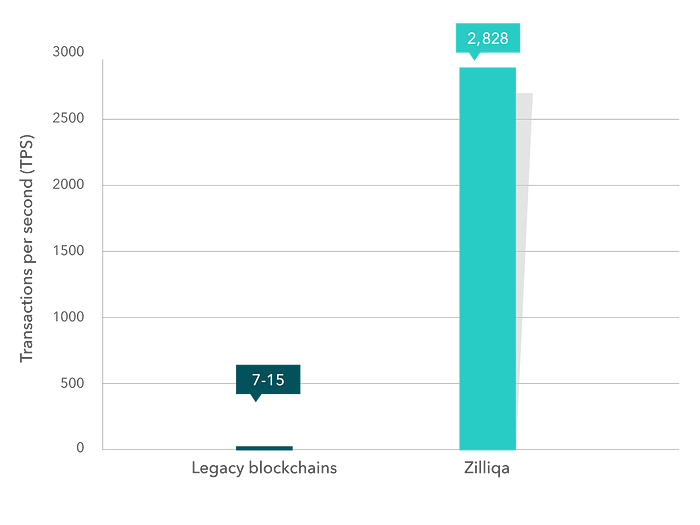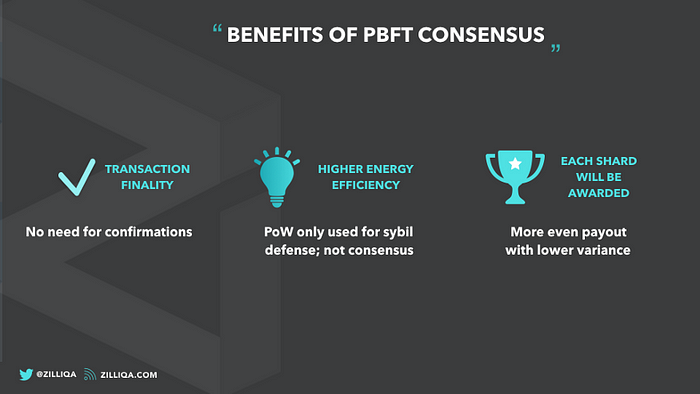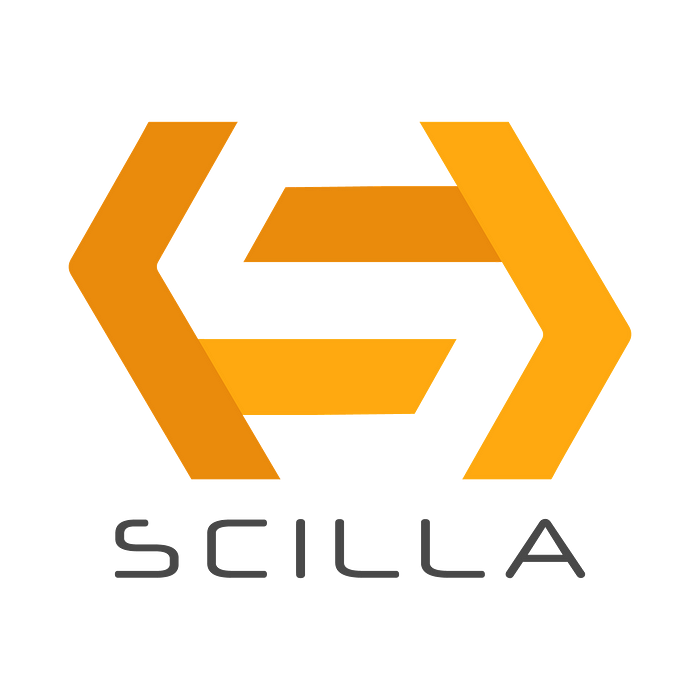Zilliqa is the first-ever public blockchain to implement sharding to its mainnet. The blockchain is foreseeing to deliver high performance and high security to enterprises and applications via refining the attribute-Scalability. According to the creators, Zilliqa has emerged to solve the ‘Blockchain Trilemma’ -the long run belief that decentralized networks never succeed to provide the benefits of all three- decentralization, security and scalability together. It’s looked at like, blockchains can only provide two of the three benefits at a given time.
Decoding Blockchain Trilemma
The first-ever mention of Blockchain Trilemma was put forward by Vitalik Buterin, the master brain behind Ethereum Blockchain. According to the Blockchain Evangelist, the chief attributes of a public blockchain are; Scalability, Security, and Decentralization. However, none till the date including Vitalik succeeded to fully incorporate the ‘Big Three’. Most of the blockchains trade off one concept (preferably scalability) to gain much improvement over others.
Adequately now we know why the Bitcoin and Ethereum Blockchain have such low transaction throughput. To attain absolute decentralization and security, they compromise on the scalability feature.
Zilliqa is all set to infiltrate into this space via astonishingly achieving much higher scalability with zero compromises on security and decentralization.
Let’s see how Zilliqa manages to solve the so-called Blockchain Trilemma.
Zilliqa introduced the concept called sharding into the public blockchains to get this work done. Now the question is what Sharding infers. In simple terms, Sharding is a partitioning technique implemented by blockchains to process the maximum number of transactions. Paged back, Sharding is a preexisting mechanism that has been used in databases to achieve I/O bandwidth and scalability. Well….Zilliqa team has managed to assimilate this technique to improve the aforementioned property.
Let’s get it cleared.
Sharding- The Power of Division

Sharding is akin to the Divide and Conquer rule. Under Sharding, the blockchain main network gets divided into multiple concurrent networks to parallelly undertake a subset of transactions, thereby significantly increasing its number. For example, imagine a network with 1000 nodes. Sharding allows the network to split among as 10 shards consisting of 100 nodes each.
More on, the network powers with a designated set of nodes to monitor these transactions and combine them to create a single transaction block. It is like each ‘shard’ reach a consensus on those transactions and commit a ‘micro-block’. The designated group, or the Directory Service Committee (as they referred) aggregate the micro-blocks and commit the final block. This parallel validation of transactions is what empowers Zilliqa with a higher number of transactions compared with high-end public blockchains (Bitcoin and Ethereum).
Rising Adoption Rate
Due to the higher transaction rate, there are fewer chances for transaction backlogs and network congestion. This achievement also diminishes the uptake of higher gas fees. Hence why Zilliqa is more adaptable in the gaming and NFT sectors.
Rising Adoption Rate
Due to the higher transaction rate, there are fewer chances for transaction backlogs and network congestion. This achievement also diminishes the uptake of higher gas fees. Hence why Zilliqa is more adaptable in the gaming and NFT sectors.

Choosing the size of each shard is an underlying issue that has to be dealt with. By the sampling process, the Zilliqa team has uncovered that for several 600, the chance of at least 1/3 nodes being malicious is around one in a million. This is favourable, because, for a blockchain, a super-majority is inevitable for all the majority-based decision process borrowed in them.
Consensus: The Binding Rule
Now you may check upon, can the sharding mechanism alone propel the rate of transactions per second. Well… .its’s not the case. For that, we need a highly efficient, computationally subdued consensus protocol. So, why not go for the Nakamoto Consensus? The thing is that Nakamoto Consensus or Proof-of-Work requires a much higher degree of computational power and time to yield the result. Hence, the Zilliqa team chooses the practical Byzantine Fault Tolerance (pBFT) protocol to reach a consensus in each shard. Even though, Zilliqa is not completely free from the grasp of PoW. Zilliqa uses PoW to establish the node identities, cover against the Sybil attacks, and elect the nodes into the DC Committee. Unlike in PoW, each node in the shard gets benefited from consensus. This provides low variance in rewards.
pBFT has absolute finality compared with the probabilistic finality of the Nakamoto consensus, which, in turn, solves the issue of transaction confirmation time in other blockchains. For example, in Bitcoin, to be confirmed of a transaction, one has to wait around 1 hour for the ensuring. This is roughly the time taken for the blockchain to commit around 6 blocks on top of the transaction.

Smart Contracts: Secret Code Behind
Zilliqa introduces a safe-by-design, functional programming language called ‘Smart Contract Intermediate Level Language’ or simply Scilla. Scilla has been conceived to solve the underlying issues in smart contract languages regarding security. The web integrated environment Neo Savant provides a playground for working out the smart contracts in Scilla and deploy them into the test network. One can simply connect to the mainnet and the testnet environments to deploy the smart contract and interact with them. Scilla provides a structure to the smart contract that makes the decentralised application less vulnerable to prevalent attacks. There is a clear separation between immutable and mutable params, libraries and stateful contracts (prevents Parity like incidents) in Scilla smart contracts.
Zilliqa ecosystem also provides a fungible token called Ziling to facilitate transactions in the system. Zilliqa has a finite supply of 21 billion ZILs. To keep inflation in check, ZIL gets burned during each transaction.

Other Functionalities
ZilPay Wallet is a mobile app/browser extension that lets one connect to the Zilliqa blockchain, being either mainnet or testnet. One can import accounts to ZilPay using keystores and sees phrases.
DEVEX is another application worth mentioning. It is a block explorer used to get details regarding the transactions and block in Zilliqa. Neo Savant is connected to DEVEX; so whenever one makes a transaction or deploy a contract, the generated hash will redirect to DEVEX, where one can see additional details regarding the given process.
LearnScilla is an interactive tutorial site for people to learn Scilla, Zilliqa’s smart contract language, through a gamification process. By completing each chapter, one can move on to the next ones. Like a game, the difficulty arises in each section.
Conclusion
By the innovative entry of sharding, along with the energy-efficient consensus mechanism of pBFT, Zilliqa manages to have an inventive position in the stage of public blockchains. High transaction throughput and low gas fees invite hordes of aspiring artists, gamers and other entrepreneurs into the hold of Zilliqa. NFT marketplaces like Unicutes and DeMons along with games build completely on top of Zilliqa, like Heroes of Lowhelm, throw an inescapable sight for those who are interested in the respective fields.
DApps like Unstoppable Domains, Mintable and ZilSwap also exhibit the promising stage of the sharded blockchain.
Zilliqa also pursues cross-chain support along with state sharding. In any public blockchain, a new node has to synchronize with the network by storing the transactions even from the time of conceiving. Zilliqa wishes to solve this issue using the process of state sharding. By the adoption of SPoS (Secure Proof-of-Stake, a prosed model of PoS by the Zilliqa dev team), Zilliqa intends to achieve much higher throughput. Replacing PoW by SPoS will certainly lessen the workload on the nodes to a definite amount.
For further information regarding the Zilliqa blockchain, visit the following sites:
➤ Blog
➤ Github

